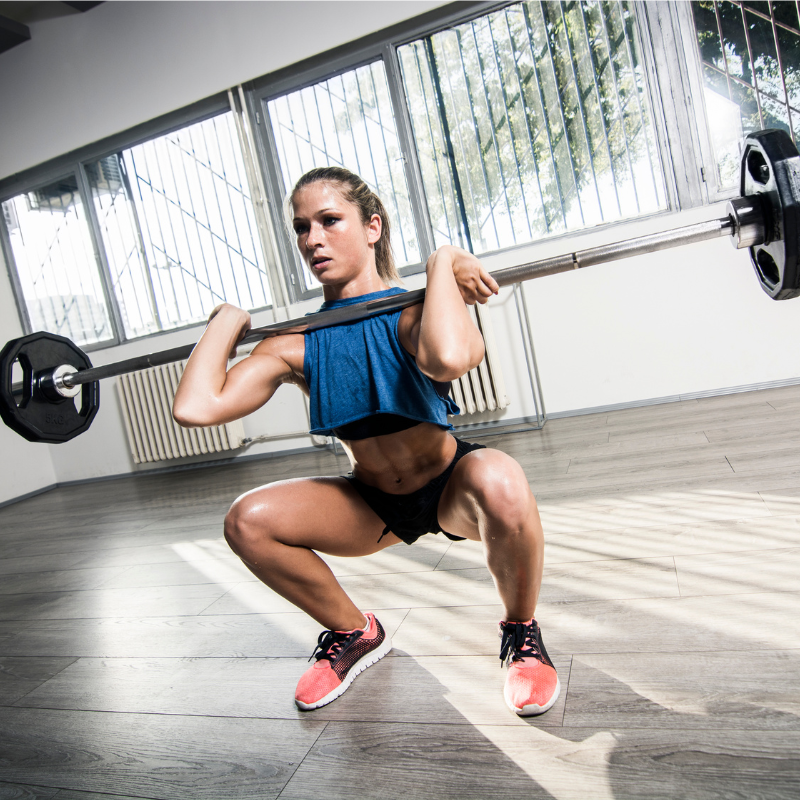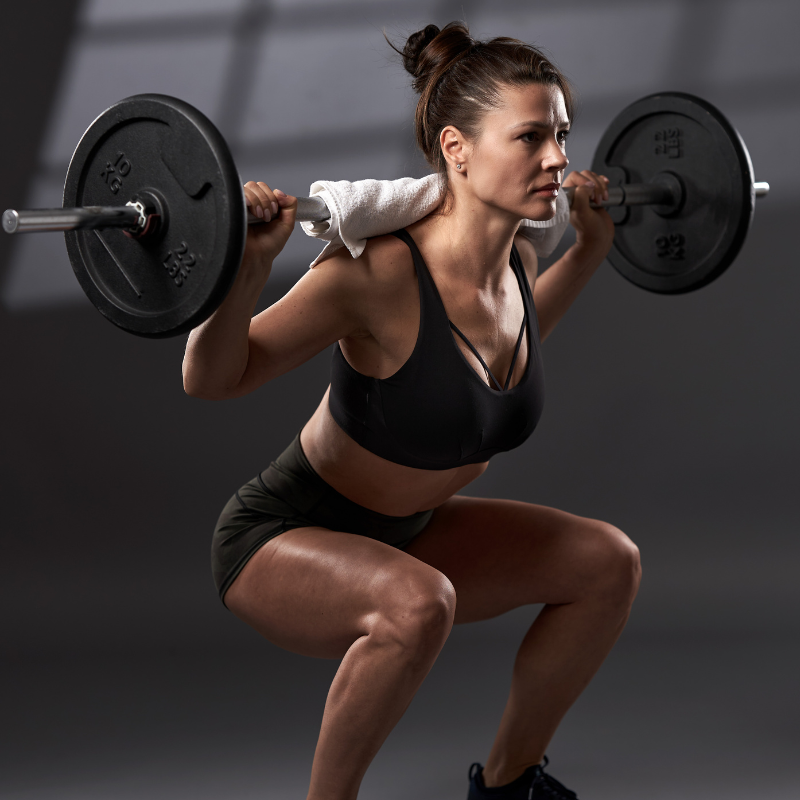
At Gaspari Nutrition, we know that squats are a foundational exercise for building lower-body strength.
However, there are two main squat variations—front squats and back squats.
Both have unique benefits and emphasize muscle groups differently.
In this post, we'll break down front squats and back squats, helping you choose which technique aligns best with your fitness goals.
Front Squats: Benefits and Techniques

The barbell rests on the front of the shoulders during a front squat, typically with the arms and fingers supporting it.
This squat variation helps build tremendous quad and core strength. By elevating the barbell to the front rack position, your body is forced to stabilize at the bottom of the squat using your abs and back muscles.
This makes front squats an excellent full-body workout.
Front Squats: Targeting the Quads and Core
When executing front squats, the barbell shifts the center of gravity forward, emphasizing quadriceps activation, leading to substantial quad development and definition.
Keeping the torso upright during the squat requires considerable bracing from the core musculature, like the rectus abdominis.
Front squats also improve posture by counteracting the pull of back squats on the posterior muscles.
Back Squats: How They Build Your Posterior Chain

The back squat is the more conventional squat variation that involves placing the barbell across the upper back.
This allows you to squat with heavier loads, leading to greater strength gains.
Back squats better target the posterior chain, including the glutes, hamstrings, and spinal erectors. If your goal is to build explosive power or a shapely behind, back squats should be a squat staple.
The Role of Glutes and Hamstrings in Back Squats
With the barbell resting on the back, the center of gravity shifts rearward, emphasizing hip and knee extension during the squat, powered by the glutes and hamstrings.
The spinal erectors also isometrically contract to maintain a neutral spine alignment.
Together, this makes the back squat superb for developing the entire posterior chain.
Front Squats vs. Back Squats: Main Differences
Both front and back squats engage the major muscle groups of the legs, including the quads, hamstrings, and glutes.
However, due to the differing barbell positions, there are some variations in muscle activation.
Back squats emphasize the posterior chain as you drive through the heels to stand up. This leads to greater activation of the glutes and hamstrings. On the other hand, front squats keep you more upright, targeting the quads to a greater extent.
Both are great for building lower body muscle, but back squats may have a slight edge for maximal hypertrophy.
Integrating Squats into Your Workout Routine
Squats are a functional exercise that can be integrated into almost any workout plan.
As compound moves, they build full-body strength while aligning with goals ranging from muscle growth to athletic performance. We recommend performing squats at the start of your lower-body sessions.
Kick-off with a gentle warm-up set, then advance to your target rep range for the main sets.
Since proper squat form is crucial—and comes with practice—prioritize proper form over heft. Increase the weight incrementally as you perfect your form.
For complete routines utilizing our supplements, see our training guides.
Enhancing Performance with Gaspari Nutrition Products

At Gaspari Nutrition, we offer a wide range of sports nutrition products to help you meet your fitness goals.
Whether you want to build muscle, boost strength, or improve athletic performance, our supplements can enhance your squat training.
Explore our product line to find the right supplements to complement your chosen squat variation.
With quality ingredients backed by science, Gaspari Nutrition has what you need to take your training to the next level.
Squat Type FAQs
How do I determine which squat variation is best for me?
Assess your strengths, weaknesses, and goals. Those seeking to prioritize quad development may favor front squats. If building posterior chain power is the priority, focus on back squats. Many benefit from incorporating both variations. Also, consider injury history and areas needing improvement.
Can I do both front and back squats in the same workout?
Yes, when programmed properly, front and back squats can complement each other in the same training session. We advise performing your heavier core lift first, then a secondary variation at a lighter load. Just be sure to allow for adequate recovery between sets.
What are some common mistakes to avoid when squatting?
Don't squat too deep without proper mobility. Descend only as far as you can while maintaining neutral spine alignment. Avoid rounding your back or letting your knees cave inward. Progress the load gradually over time and use safety equipment like a squat rack. Master form before increasing weight.



